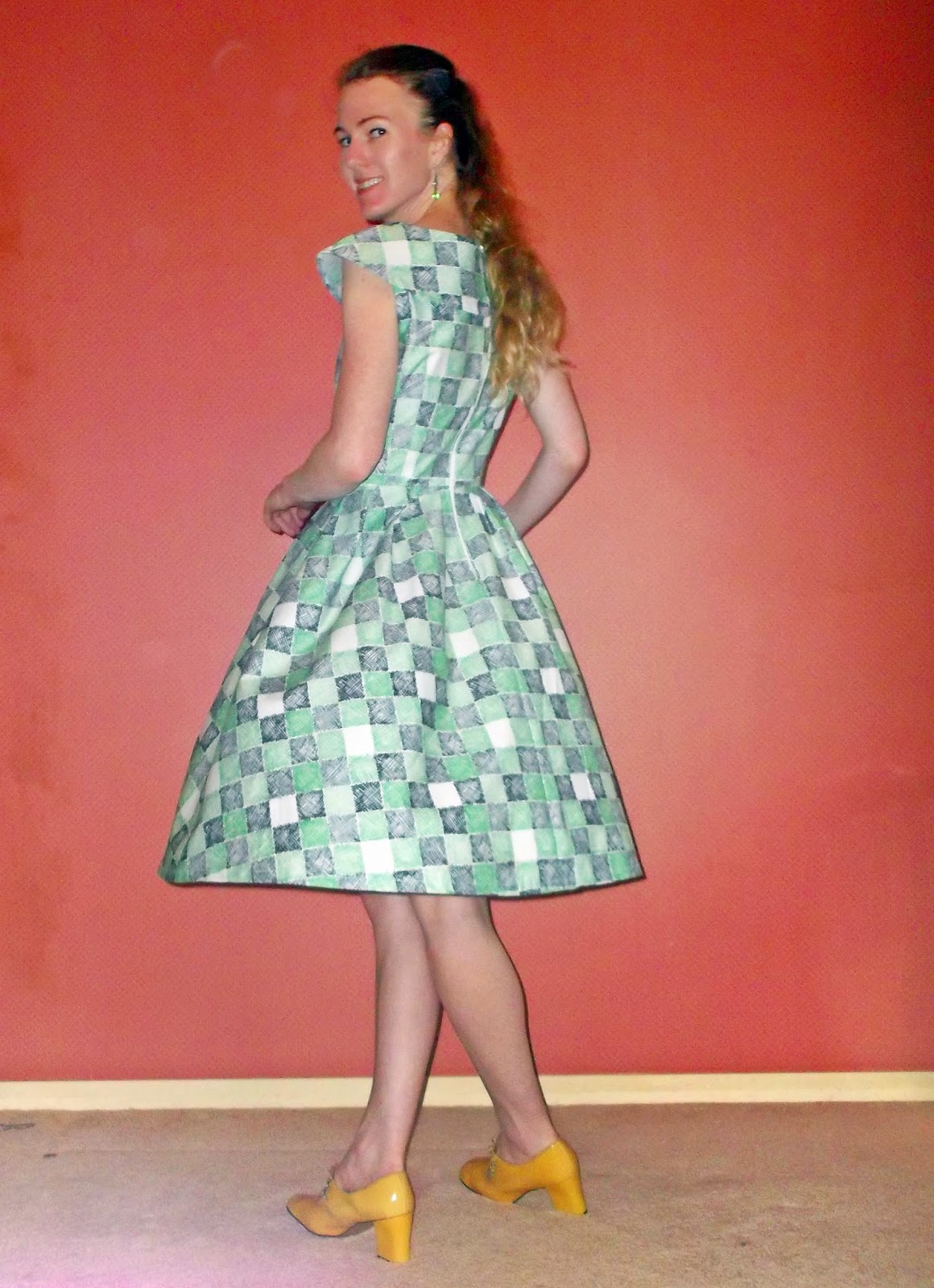It's taken a bit longer than I wanted to get around to posting this dress. Making it was easy, but because of a useless phone and internet company who shall remain nameless but are the second largest telecommunications company in Australia and start with an O have left us without home phone and internet for a week and counting, so I have to visit neighbours if I want to do anything more than check an email. Lack of internet should give me more time for sewing, though, so there may be a backlog of projects to post once our internet issues are sorted.
The pattern is the absolutely lovely Project Runway 2444, which everyone should own. It has gorgeous double diagonal bust darts extending up from the centre waist, giving a classic and elegant feel, and diagonal pleats in the skirt. Being a project runway pattern it has a number of variations, and my version includes the cape collar. The dress even has pockets! More dresses should have pockets, they're so useful.
This fabric is a vintage find, I'm not certain but I think it might date from the 1950s. So this dress is part of my 2015 vintage sewing pledge which A Stitching Odyssey is running. I pledged both to make vintage clothes and use vintage fabrics, six of each for some crazy reason, so this dress is one of my vintage fabric makes for the year. The dress itself does also have a vintage feel, but it's not a vintage pattern or vintage-inspired pattern, so it doesn't count for that part of the pledge.
These two photos show the close-up of the cape collar and the diagonal darts. I was happy it turned out as well as it did - although the print is a grid, when I folded it to cut the pattern pieces out it didn't sit evenly. I checked that the edges were aligned, unfolded and refolded it, measured it, and it was still a bit uneven. Honestly, there's some weird magic going on with the fabric. The bodice piece is even horizontally, but was slightly off-kilter vertically. I covered it up as best I could by stitching the collar knot down on what should be the centre, so the unevenness isn't obvious unless you look closely.
Also, don't look to closely at the zip, the stitching isn't fantastic. Nothing like a fabric with clear lines to show up a crappy sewing job! As for the name of the dress, well the fabric with its crosshatched squares of green, black, and white does look like some sort of strange chessboard. And the green made me think of either mould or the environment, and the environment is a much nicer reference point than mould.
The fabric is quite weighty and thick, giving a good amount of body to the dress. I think this pattern works best with a weightier fabric, either a heavy cotton like this or a solid satin for something fancy. The other thing I like about this dress is that it feels grown up, like I'm a real adult - or at least playing at being one!
I tend not to make patterns multiple times, but this is the second time I've made this one and probably won't be the last. It really is a great and versatile pattern, and worth buying if you don't already own it.















